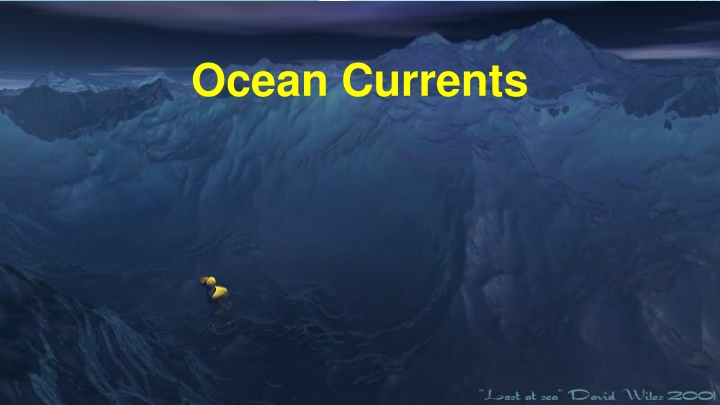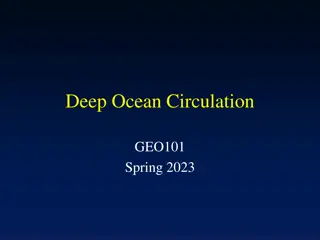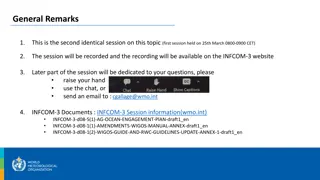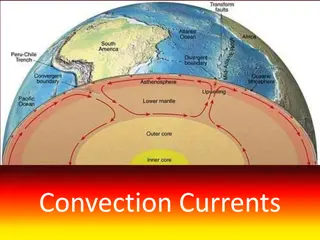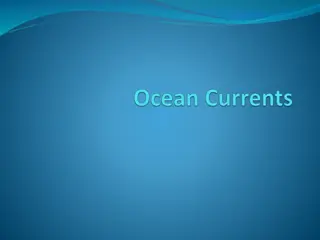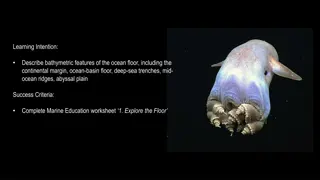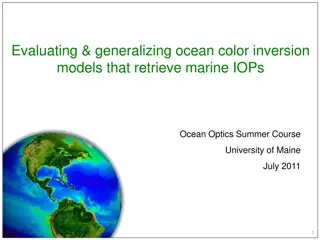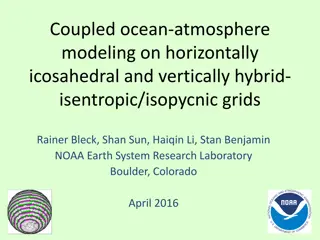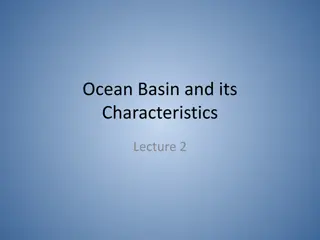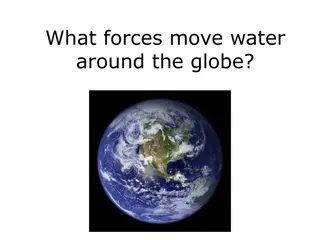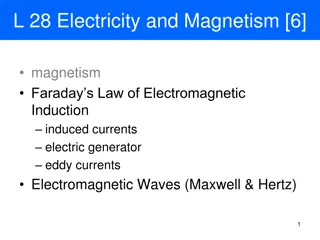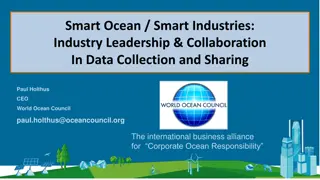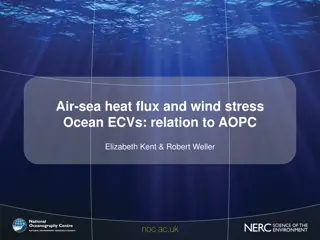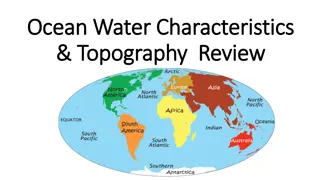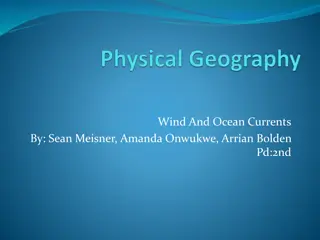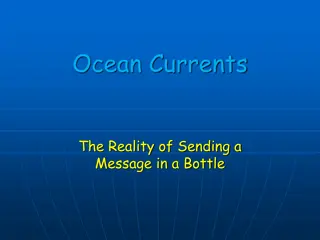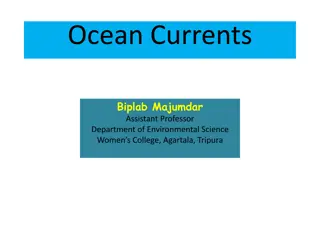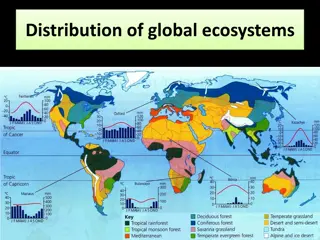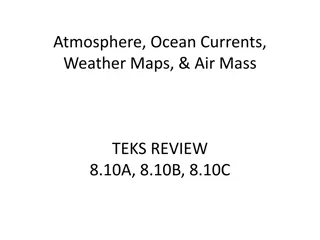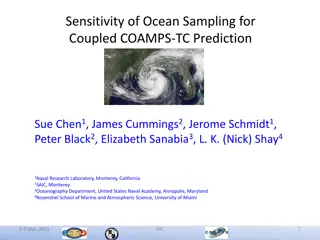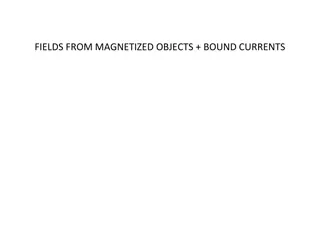The Importance of Ocean Currents in Global Systems
Ocean currents play a vital role in transporting heat, nutrients, organisms, and influencing weather patterns and climates. They impact commerce, gas exchanges, nutrient exchanges, pollution dispersal, and fisheries. The interaction between surface and deep-sea currents forms the global ocean conveyor belt, essential for maintaining ocean circulation and marine life distribution.
Download Presentation

Please find below an Image/Link to download the presentation.
The content on the website is provided AS IS for your information and personal use only. It may not be sold, licensed, or shared on other websites without obtaining consent from the author.If you encounter any issues during the download, it is possible that the publisher has removed the file from their server.
You are allowed to download the files provided on this website for personal or commercial use, subject to the condition that they are used lawfully. All files are the property of their respective owners.
The content on the website is provided AS IS for your information and personal use only. It may not be sold, licensed, or shared on other websites without obtaining consent from the author.
E N D
Presentation Transcript
Why is Ocean Circulation Important? Transport heat Equator to poles Transport nutrients and organisms Influences weather and climate Influences commerce
Ocean Currents Surface Currents The upper 400 meters of the ocean (10%). Deep Water Currents Thermal/Salinity currents (90%)
90o 60o Surface Currents Forces 30o 1. Solar Heating (temp, density) 0o 2. Winds 30o 3. Coriolis 60o 90o
What do Nike shoes, rubber ducks, and hockey gloves have to do with currents?
Duckie Progress January 1992 - shipwrecked in the Pacific Ocean, off the coast of China November 1992 - half had drifted north to the Bering Sea and Alaska; the other half went south to Indonesia and Australia 1995 to 2000 - spent five years in the Arctic ice floes, slowly working their way through the glaciers 2001 - the duckies bobbed over the place where the Titanic had sunk 2003 - they were predicted to begin washing up onshore in New England, but only one was spotted in Maine 2007 - a couple duckies and frogs were found on the beaches of Scotland and southwest England.
2004-2007 Barber s Point
Surface and Deep-Sea Current Interactions Global Ocean Conveyor Belt
Transport by Currents Surface currents play significant roles in transport heat energy from equatorial waters towards the poles, and visa versa. Currents also involved with gas exchanges, especially O2 and CO2 Nutrient exchanges important within surface waters (including outflow from continents) and deeper waters (upwelling and downwelling) Pollution dispersal Impact on fisheries and other resources
Global ocean circulation that is driven by differences in the density of the sea water which is controlled by temperature and salinity.
http://www.whoi.edu/institutes/occi/images/occi_abrclimate_wef_en1.gifhttp://www.whoi.edu/institutes/occi/images/occi_abrclimate_wef_en1.gif The global ocean circulation system, often called the Ocean Conveyor, transports heat throughout the planet. White sections show warm surface currents. Purple sections show deep cold currents. WHOI Graphic Services T her mohaline Cir culation
Upwelling and downwelling Vertical movement of water Upwelling = movement of deep water to surface Hoists cold, nutrient-rich water to surface Produces high productivities and abundant marine life Downwelling = movement of surface water down Moves warm, nutrient-depleted surface water down Not associated with high productivities or abundant marine life
upwelling downwelling
El Nio-Southern Oscillation (ENSO) El Ni o = warm surface current in equatorial eastern Pacific that occurs periodically around December Southern Oscillation = change in atmospheric pressure over Pacific Ocean accompanying El Ni o ENSO describes a combined oceanic-atmospheric disturbance
El Nio Oceanic and atmospheric phenomenon in the Pacific Ocean Occurs during December 2 to 7 year cycle Atmospheric Winds Upwelling
Non El Nio El Ni o 1997
Non El Nio upwelling El Ni o Thermocline layer of ocean right beneath the mixed layer where temperatures decrease rapidly.
El Nio events over the last 55 years Multivariet ENSO Index El Ni o warmings (red) and La Ni a coolings (blue) since 1950. Source: NOAA Climate Diagnostics Center
World Wide Effects of El Nio Weather patterns Marine Life Economic resources El Nino Animation El Nino Animation
Effects of severe El Ni os
